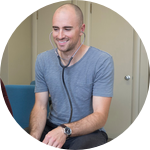About This Project
The menopausal transition is associated with an increase in fat mass in the abdominal region, which in turn increases waist circumference. A waist circumference (WC) of over 88 centimeters is a risk factor for cardiovascular disease. It has been shown that more than 80% of postmenopausal women are over this cut-off point, but not all develop cardiovascular disease. The goal of this study is to find a new WC cut-off point that is more suitable for postmenopausal women.
Ask the Scientists
Join The DiscussionWhat is the context of this research?
The menopausal transition is related with an increase in fat mass in the abdominal region. Waist circumference (WC) has been demonstrated to be an efficient tool to measure abdominal fat and can detect the risk of developing cardiovascular disease (CVD). For women, a WC more than 88cm is a risk factor for CVD. The NHANES data demonstrates that the average WC for women aged 50 years and older is 94.4 cm, which is clearly over the cut-off point for CVD risk, but the prevalence of CVD in this population is lower than 10% in women between 45 and 55 years old. This demonstrates that there is a need to revisit the current cut-off points in postmenopausal women.
What is the significance of this project?
There is clearly a gap in the data regarding postmenopausal women and the waist circumference cut-off point for the risk of developing CVD. This project will help develop a more sensitive cut-off point that could identify women with CVD risk using waist circumference (WC). Since WC is a more reliable tool that BMI to detect CDV risk, it is necessary to be able to use this tool in this population.
Health professionals will be able to use this new cut-off point in postmenopausal women and this will help them detect CVD risk in this population.
What are the goals of the project?
The goal of this study is to propose a new cut-off point for waist circumference for postmenopausal women. To realize this, we will use NHANES (National Health and Nutrition Examination Survey) data that recruits approximately 5000 participants that lives in the US each year. We will use complex statistical methods to detect the proper cut-off point of WC in postmenopausal women.
Budget
The funds will make sure that the student and the statistician in charge will get paid for the work realized of this project.
Endorsed by
Meet the Team
Team Bio
The exercise and metabolism laboratory in Sherbrooke Québec represents a team of 3 researchers in the field of aging. They are actively pursuing the impact of exercise in the prevention of disease in elderly individuals. The laboratory also includes a lab coordinator and more than 15 students pursuing their masters or PhD degrees.
Mathieu Maltais
I am a research coordinator at the Research Center on Aging, working with researchers that are implicated in the Canadian Research Chair in exercise prescription for healthy aging. My interests are focused on the changes of body composition during aging and its impact on physical capacity. Also, I am interested in exercise prescription for healthy aging.
Lab Notes
Nothing posted yet.
Project Backers
- 0Backers
- 0%Funded
- $0Total Donations
- $0Average Donation

